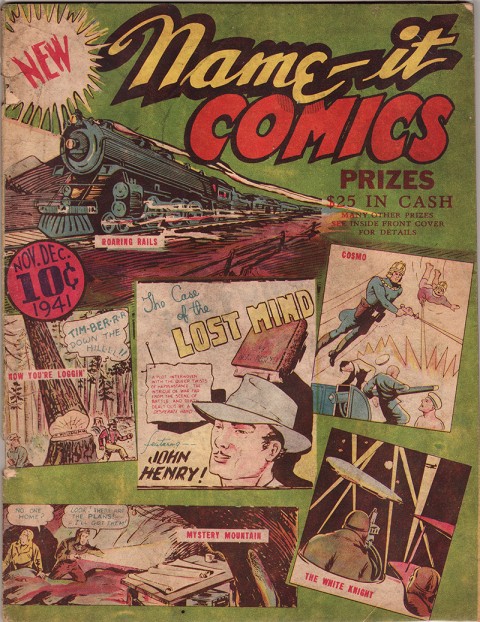
Last post my subject was Bus Griffiths and his truly Canadian contribution to the WECA period as well as how this was revived and reworked into one of Canada’s first graphic novels. As a continuation of that post, this time I’d like to concentrate on the very first “Now You’re Loggin’” strip and the vehicle in which it appeared, Name-It Comics No. 1 from Nov.-Dec. 1941. In doing this, I’d like to thank Jim Finlay who made the details from his copy available to me.
By the time Name-It Comics came out, Maple Leaf’s first title, and Canada’s first comic book, Better Comics had already had eight issues out and its second title, Lucky Comics (at that time known as “Union Jack – Lucky Comics”) had half that. The other title that came out concurrently with Name-It Comics was Bing Bang Comics with its lead and cover feature being the adolescent, Denis the Menace type of trouble maker, Pinky.
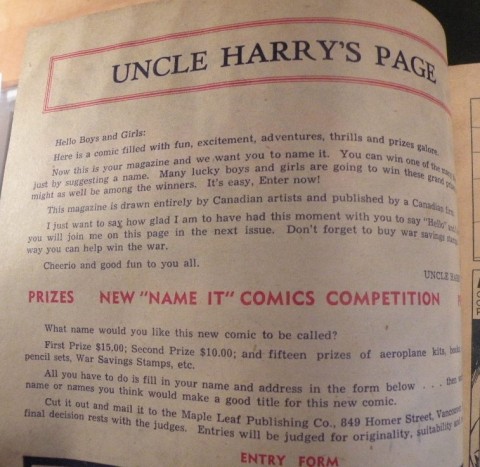
As mentioned last time, the “gimmick” of name it comics was that it would have a contest where the readers of this issue would choose its name for the next and subsequent issues. The winning name was Rocket Comics and this is the title it bore until the end of its run in 1946.
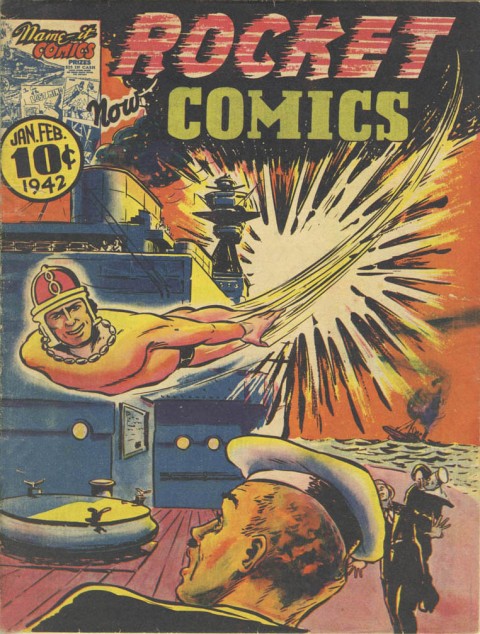
The cover of Name It Comics displays a collage of its five different content features. The lead-off feature, and the one most associated with Rocket Comics, is “Cosmo and His White Magic” by Spike Brown who also was the creator of British Columbia’s Police presence “Sargent Canuck” in Bing Bang Comics. This is the story of wealthy Canadian scientist Cosmo Grant who carries on his late father’s work developing a number of gadgets and formulas that give him amazing capabilities. As the series goes on each one of these creations becomes a “Cosmo-this” and a “Cosmo-that” much in the vein of the Silver Age Batman. After dealing with the Axis throughout the war Cosmo and his pal Hoot find their way down to Atlantis for the final issues.
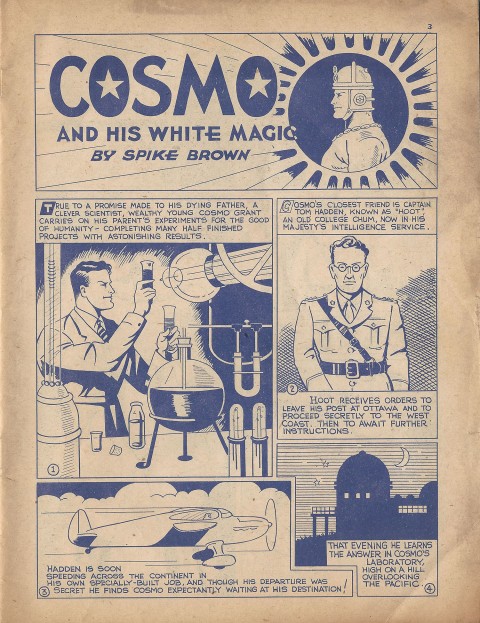
Following “Cosmo” comes a historic/biographic feature about Canadian World War 1 air ace, Billy Bishop called “Bishop The White Knight” that was written by Ted Watson and drawn by “Hope” which is Vernon Miller’s rarely used middle name.
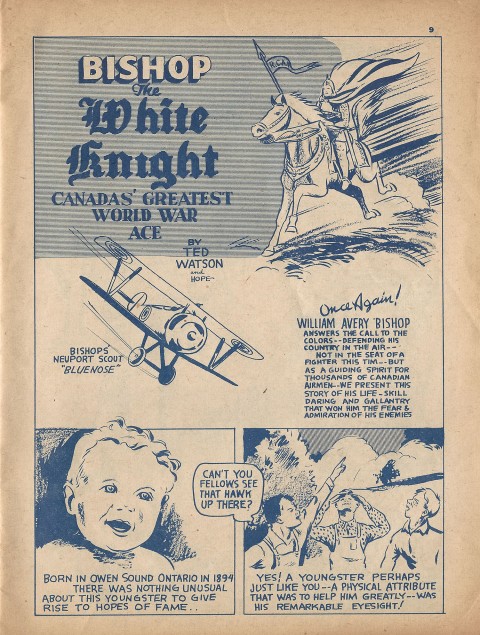
After this comes a detective/espionage type of series by Bert Bushell called “The Case of the Lost Mind” starring John Henry. Both of these series were fairly short-lived in the title.
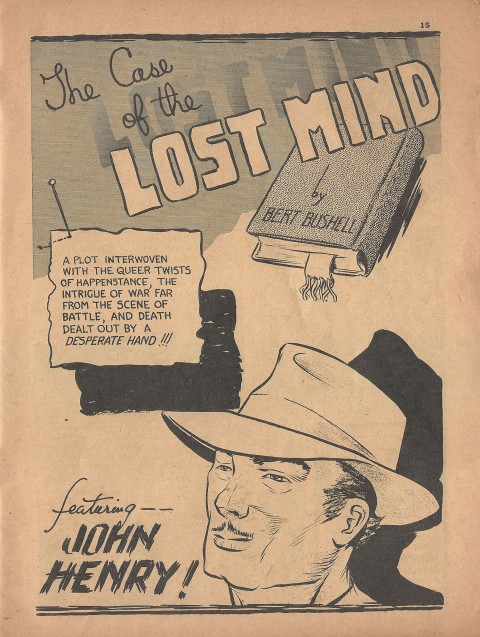
The fourth feature in the book is “Roaring Rails” by Vernon Miller and Miller seems to start the series again after already having two episodes in the first two issues of Better Comics. It stars railroad engineer Steele (one of the most common first and last names used for characters in the WECA books) Dawson and how he deals with the sabotage of one of his trains.
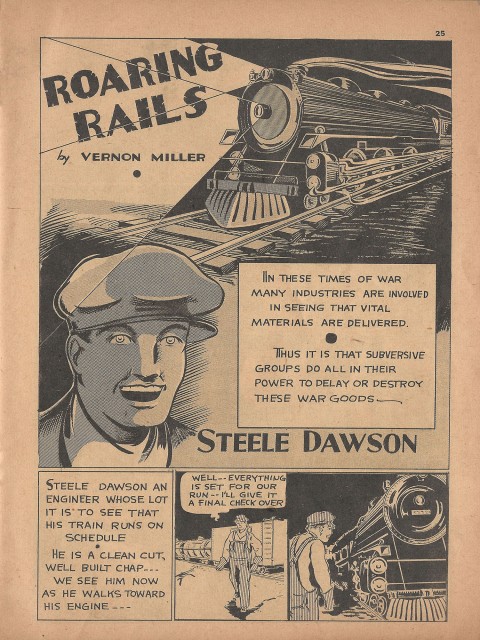
The fifth feature stars expert aviator Sid Stacey and radio whiz Tom Masters, two Canadians who take on fifth columnists based in a local mountain. The name of the series is “Mystery Mountain” and it’s written by Ed. Warden and drawn by Verler (Vernon Miller). The thing to notice is that Maple Leaf Publications main man Vernon Miller has three different “by-lines” in this book. For the feature he created (“Roaring Rails”) and both wrote and drew he uses the full Vernon Miller, but for the features he supports with just his artwork he uses “Hope” and “Verler.”
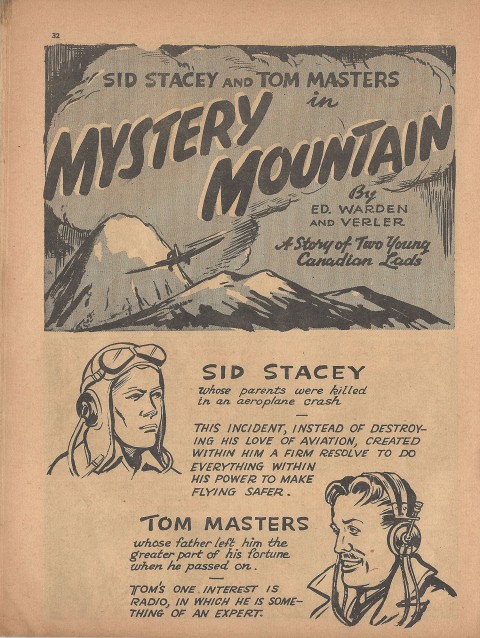
The book closes with Bus Griffiths first “Now You’re Loggin’” story (notice the final “g” is elided here but the solid engma is there for the graphic novel title more than 35 years later). Bus was 28 when this first “Loggin’” story was published and had probably been working as a faller in the BC woods for a number of years and right through the heart of the Great Depression.
Here is the strip in its full nine pages. We’re introduced to job-hunting Vancouver city boys Alan Richards and Red Harris who make an impetuous decision to try logging and are sent on an over-night boat up the coast to Bradley’s Logging Camp. We do encounter these same guys in the graphic novel but there they are already full-blown, seasoned loggers and this makes these prequel comic book “origin” stories that much more precious and important pieces to accompany the Bus Griffiths “Now You’re Logging” master work. Here in their first appearance they remain in suit, tie, and fedora for the whole first half of the strip. On the long walk down road from the boat to the camp they meet heart throb Helen who is the daughter of a local farmer. In the graphic novel, Al meets Debbie Brown, daughter of a former logger and now homesteader and, in fact, proposes to her on the very last page which fades out at a silhouette of the couple sitting together in the final panel. To round off this very first installment, Griffiths throws in some skillfully layered crises that promise quality drama and excitement in episodes to come.
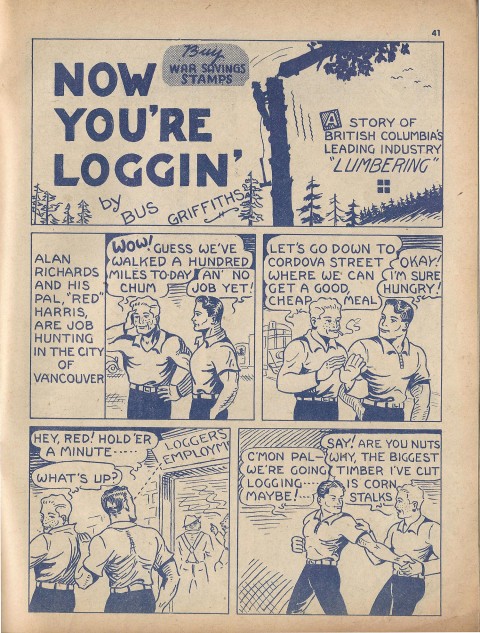
The important thing to see here is that this idea has already jumped complete from the forehead of a 28 year-old Bus Griffiths and in this first incarnation shows the care in detail and density of technical terminology that is the hallmark of his graphic novel that revived this original idea a generation and a half later. These stories from Rocket Comics deserve to be reprinted as a complement to the next edition of Now Your Logging.
Thanks again to Jim Finlay for sharing the contents of his copy of Name-It Comics.

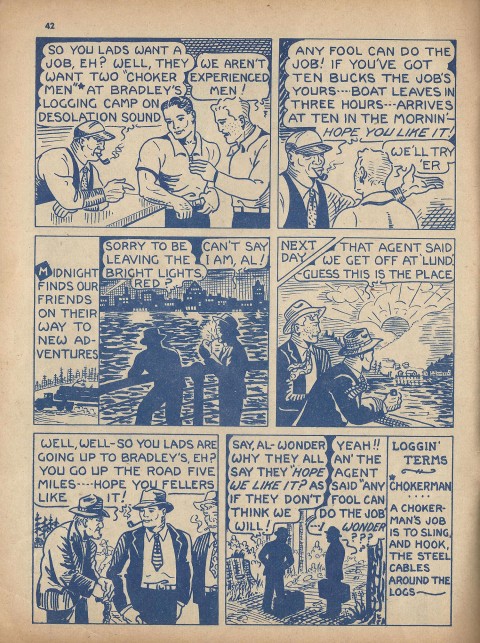
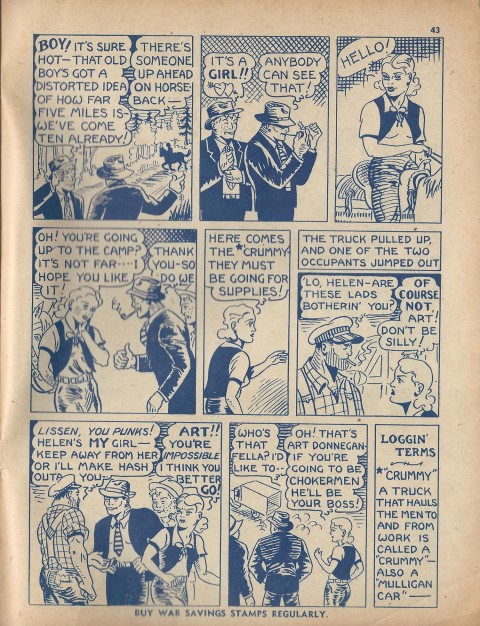
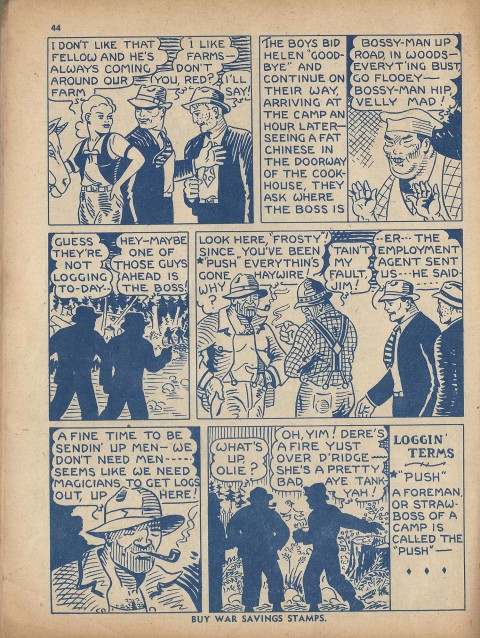
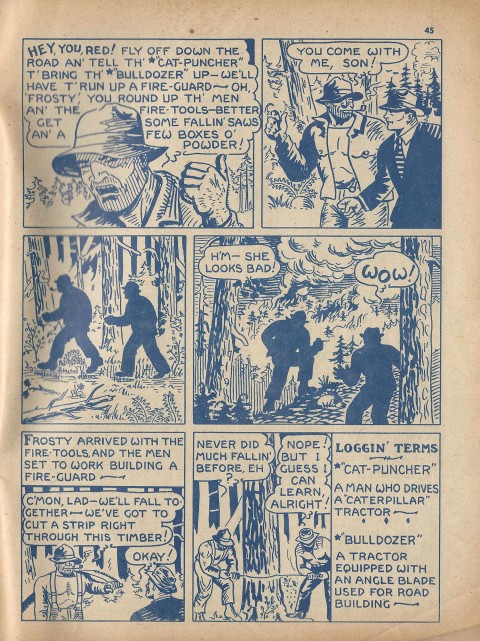
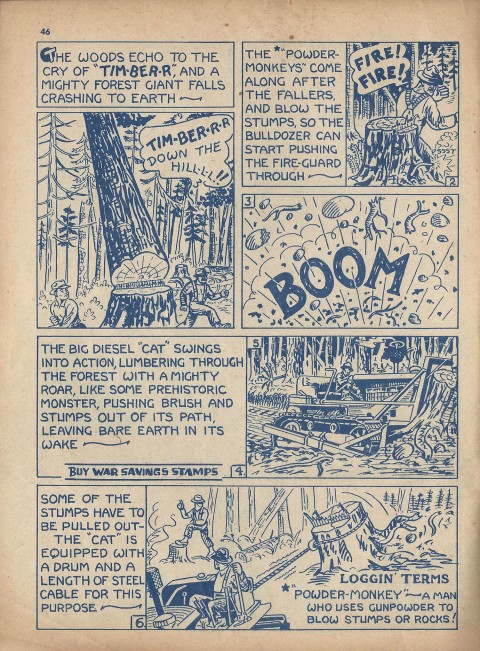
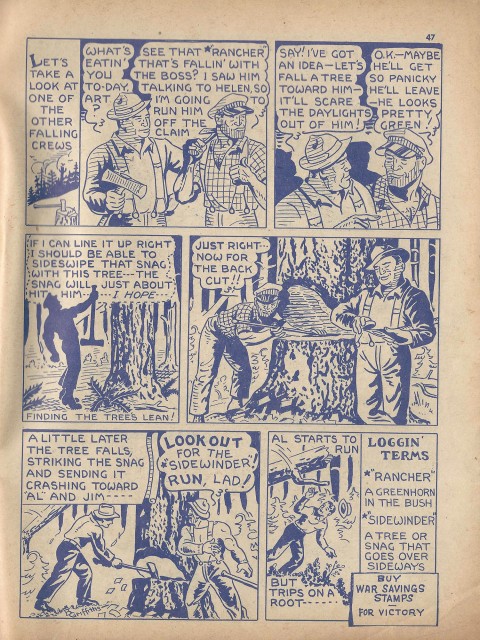
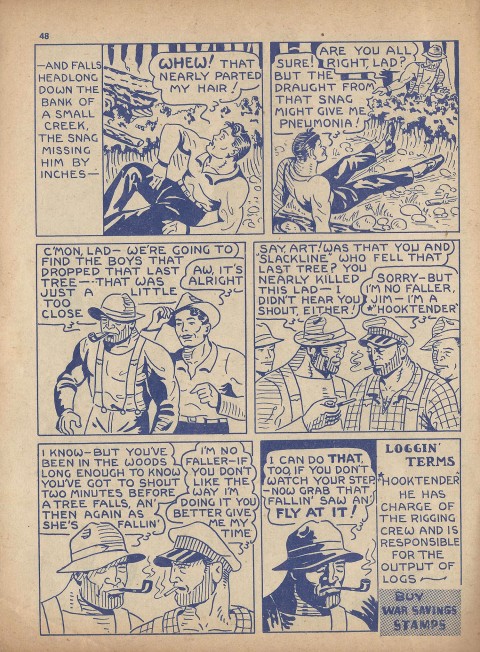
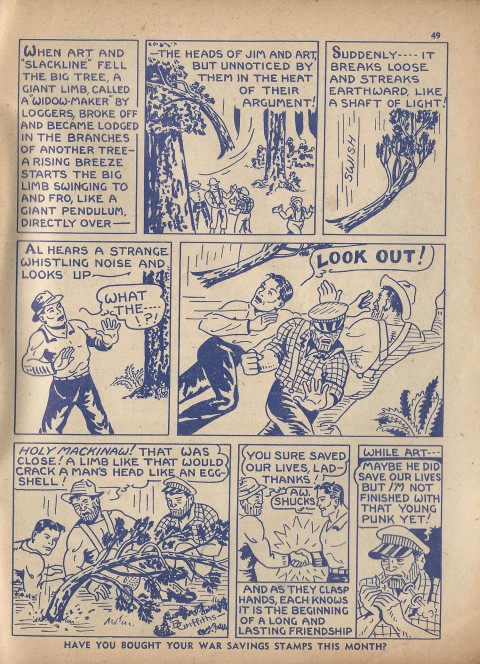
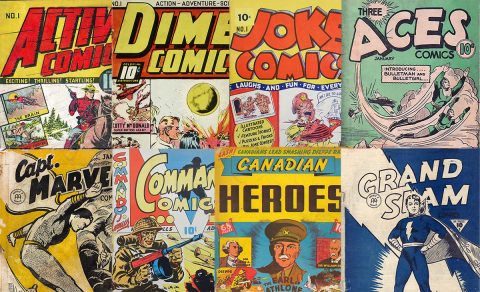
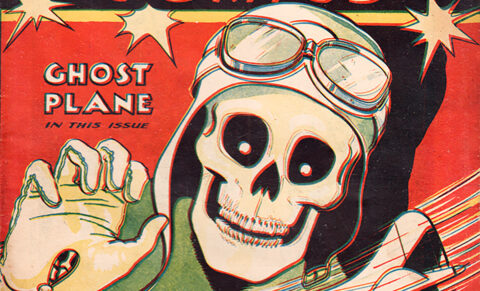
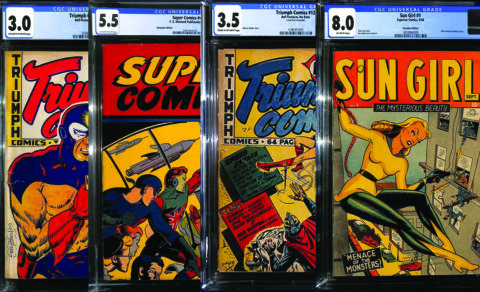
Uncle Harry’s Page would have to be by Maple Leaf Comics head honcho, periodical distributor Harry Smith.
Nice post once again Ivan.
~jim b.
Thanks for another piece of great info, Jim. Now we have an Uncle Verne and an Uncle Harry with their fireside editorials at Maple Leaf. I wonder if there is an Uncle Ted later on?
I’ll bet that’s a good possibility Ivan, I guess that ‘uncles’ were a familiar thing for kids at one time. Didn’t you guys in Hamilton have an Uncle Bobby on television for quite awhile?
I’d love to find out more on some of the unsung Canadian creators of Maple Leaf comics, would you have any illustration samples for artist John MacKillop? I know that he was in the credits for Lucky Comics #33 and one of his art pieces just surfaced this year that gives some idea of his career in the nineteen forties and fifties.
Here’s a link to a site of Vancouver and B.C. art that mentions him, and it seems that his daughter may to have carried on as an artist also:
http://illustratedvancouver.ca/tagged/John-Mackillop
~ jim b.
My favourite thing about Name-it Comics #1 is its the first Cosmo story.
While Better #1 may have Vernon Miller’s Ironman, who is more like Prince Namor, the Sub-Mariner from Marvel Comics #1 Name-it Comics #1 Cosmo I would contend is the true original Iron man, preceding Marvel’s Iron man by more than two decades.
Here are a few comparisons of the two: Cosmo vs Marvel’s Iron Man
Cosmo’s power comes from science ,much like Tony Stark and his helmet is the most important part of his outfit which gives him flight,strength he uses sensors much like Tony Stark’s Iron Man. Both their most prominent features are their “Shellheads”
Cosmo Grant is a rich inheritor of his fathers wealth who further pursues his dead father inventions as a scientist much like Tony Stark.
Cosmo Grant helps out the Government through a military liaison who is his best friend and dons a suit to fight alongside him named Capt. “Hoot” Hadden. Tony Stark Has Col. “Rhodey” Rhodes.
While Name it #1 is not as important as Better #1 it is, as a later issue should be, more polished and refined as new artists were added to the stable.
I’m interested to hear your opinion, Ivan, of the comparison since you probably have had access to more material than I have so far.
Thanks for this info again, Jim. I think Uncle Bobby was a British guy who was on CFTO in Toronto in the sixties. I don’t have much on John Malcolm MacKillop but here is a site that features his daughter’s work and actually shows a picture of the family on a Canadian Homes Magazine cover from 1963: http://jeansmithpainter.wordpress.com/tag/jean-smith/
His daughter, Jean Smith, also has a you tube page that includes a short video of her father John MacKillop just the day before his 86th birthday:
http://youtu.be/m0aBqwMrB0E
I also have him in the credits for Lucky Comics 34. He seems to have been born around 1926 so the video is only a couple of years old. In fact he may still be around, I hope. I’m trying to find out.
Interesting point, Jim. I’ve heard Cosmo compared to Batman (another rich gadget inventor type) and this comparison to Tony Stark and Iron Man has legs too. Where the comparison falls for me a little is in the fact that Cosmo’s power comes almost exclusively from his helmet and then he’s got his side gadgets (ray gun, etc.) as well. Iron Man has a whole body suit stamped right on top of him. I find more a broad analogy between Thunderfist with his exo-skeletal type of suit that gives him special techno-powers and Iron man as the superhero, even though the back story of wealth isn’t the same.
I think my favourite Maple Leaf feature, after Iron man and Brok, is Cosmo. 🙂 The whole “Uncle” thing also features heavily on the Vancouver Daily Province’s Tillicum Club kid’s page at the time Smith and Miller started Maple Leaf.
Thanks for chiming in Ken and I agree with you about Cosmo and would even put him higher. I hope your research on Maple Leaf Publications is going well and I look forward to reading you piece in Hope’s upcoming Brok Windsor reprint book.